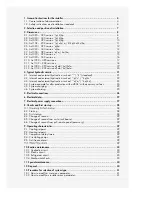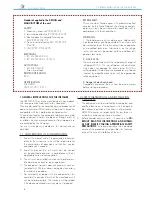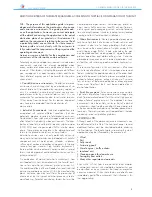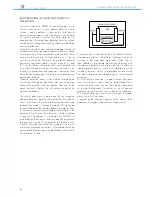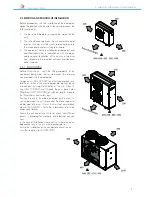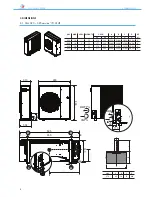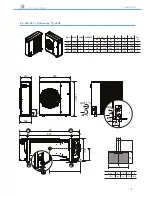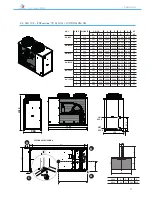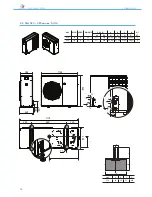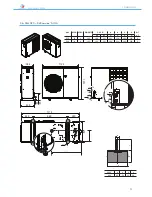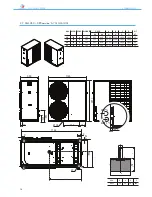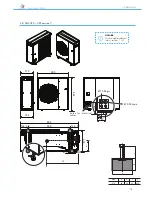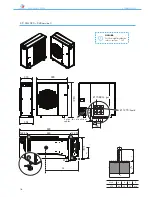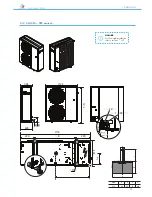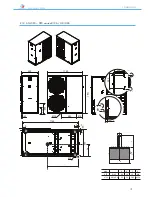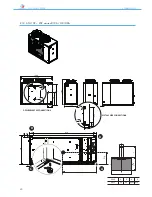
ANL - ANLH 020-202
5
N.B.: The purpose of this application guide is to provi-
de general information on the mechanisms of corrosion
and corrosive environments. The guide provides advi-
ce on the applications, however, you cannot anticipate
all the details concerning the application in the actual
destination place of our products in this document. In
addition, the requirements relating to the service life of
a potential product are not known. For these reasons,
Aermec prefers to work closely with the customers to
fully understand the requirements of the project and the
operating environments.
Aermec assumes no liability for the completeness and
correctness of the information contained herein.
Potentially corrosive outdoor environments include areas
near coasts, industrial sites, densely populated urban
areas, certain rural areas or a combination of these envi-
ronments. Other factors, including the presence of effl uent
gas, sewage vents or open sewage systems and the ex-
haust of diesel engines can all be harmful for the micro-
channel coil.
• Coast
al/marine environments:
Coastal and marine
environments are distinguished by an abundance of so-
dium chloride (salt) transported by sea spray, vapour or
mist. It is important to note that salt water can be trans-
ported many miles by wind and tidal currents. It is not
uncommon for contamination due to salt water to occur
10 km away from the coast. For this reason, equipment
may have to be protected from the electrolytes of
marine origin.
• Industrial E
nvironments:
Industrial applications are
associated with several different conditions that can
potentially produce a variety of atmospheric emissions.
Contaminants from sulphur and nitrogen oxides are most
often linked to high-density urban environments. The com-
bustion of coal oils and fuel oils releases sulphur oxides
(SO2, SO3) and nitrogen oxides (NOx) into the atmos-
phere. These gases accumulate in the atmosphere and
return to the ground as acid rain or low pH dew.
Industrial emissions are not only potentially corrosive:
many industrial dust particles can be loaded with harmful
components such as metal oxides, chlorides, sulphates,
sulfuric acid, carbon and carbon compounds. In the pre-
sence of oxygen, water or high humidity environments,
these particles can be extremely corrosive and in several
forms, including general and localised corrosion, such as
pitting and anthill.
A combination of marine/industrial environments: Sea
mist loaded with salt, associated with the harmful emis-
sions of an industrial environment, poses a serious risk.
The combined effects of the salt loaded mist and industrial
emissions accelerate corrosion. Within the manufacturing
plants, corrosive gas may result from the processing of
chemicals or by the typical industrial processes used in
manufacturing. Potential contributing factors that must be
SELECTION CRITERIA OF THE HEAT EXCHANGERS ACCORDING TO THE PLACE OF INSTALLATION OF THE UNIT
considered are open sewers, vent openings, diesel ex-
haust, heavy traffi c emissions, landfi lls, exhaust from air-
craft engines and oceangoing vessels, industrial produc-
tion, chemical treatment structures (cooling towers located
nearby) and fossil fuel electrical installations.
• Urba
n Environments:
Densely populated areas gene-
rally have high levels of emissions of motor vehicles and
increases in duel use for heating buildings. Both condi-
tions increase the concentration of sulphur oxides (SOx)
and nitrogen oxide (NOx). Inside a building, the gas
can be produced from cleaning agents, cigarette smoke,
process operations and data centre printers. Corrosive
atmospheres may even occur in some closed areas, such
as facilities with swimming pools and water treatment sys-
tems.
The severity of corrosion in this environment is infl uenced
by the levels of pollution, which in turn depend on several
factors, including the population density of the area. Each
piece of equipment installed in places immediately near
exhaust of diesel engines, exhaust chimneys of incinera-
tors, chimneys of fuel-powered boilers or areas exposed
to emissions from fossil fuels, must be considered an in-
dustrial application.
• Rural
Environments:
Rural environments may contain
high levels of pollution from ammonia and nitrogen pro-
ducts from animal excrements,fertilizers and high concen-
tration of diesel engine exhaust. The approach to these
environments must be entirely similar to that of industrial
environments. Local weather conditions have a major role
in the concentration or dispersion of outdoor gaseous con-
taminants. Thermal inversions can trap pollutants, thereby
producing serious air pollution problems.
ADDITIONAL TIPS
Although each of the above corrosive environments can
be detrimental to the life of the heat exchanger, several
additional factors must be considered before choosing
the fi nal design. The local climate surrounding the site of
application may be infl uenced by the presence of:
• W
ind
• Dust
• Salty roads
• Swimming pools
• Diesel engine / traffi c exhaust
• Localised mist
• Cleaning agents for domestic use
• Sewage system outlets
• Many other separate contaminants
Even within 3-5 km from these particular local climates
a normal environment with moderate characteristics can
be classifi ed as an environment that requires preventive
corrosion measures. When these factors are directly and
immediately part of the environment, their infl uence is fur-
ther aggravating.
1. GENERAL INSTRUCTIONS FOR THE INSTALLER


